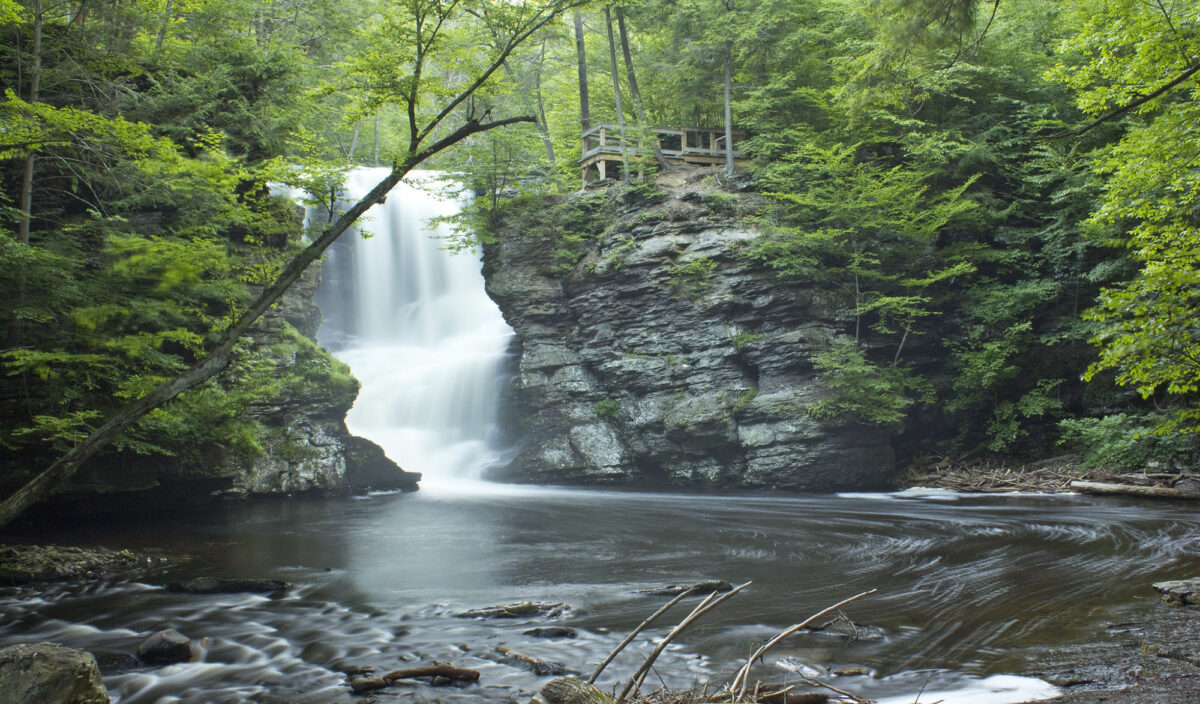Page snapshot: Pennsylvania State Geologic Map; Fossil; 3D models; Rock; Mineral; Gem; Highest and Lowest Elevations; Places to Visit; and Additional Resources.
Image above: Fulmer Falls in the Delaware Water Gap National Recreation Area in Bushkill, Pennsylvania. Here, Dingmans Creek (a tributary of the Delaware River) cuts through the local bedrock of tilted Paleozoic strata. Photo by Jeff Moore (Flickr; Creative Commons Attribution-NonCommercial 2.0 Generic license; image cropped and resized).
Geologic Map of Pennsylvania

Geologic map of Pennsylvania showing maximum ages of mappable units. Image by Kiera D. Crowley for the Earth@Home project developed using QGIS and USGS data (public domain) from Fenneman and Johnson (1946) and Horton et al. (2017).
Pennsylvania State Fossil: Trilobite
In 1988, Pennsylvania officially named its state fossil as the trilobite Eldredgeops rana (="Phacops rana") after it was lobbied for by an elementary school science class. The species is named after its large eyes ("rana" is Latin for frog), which were composed of many individual lenses.
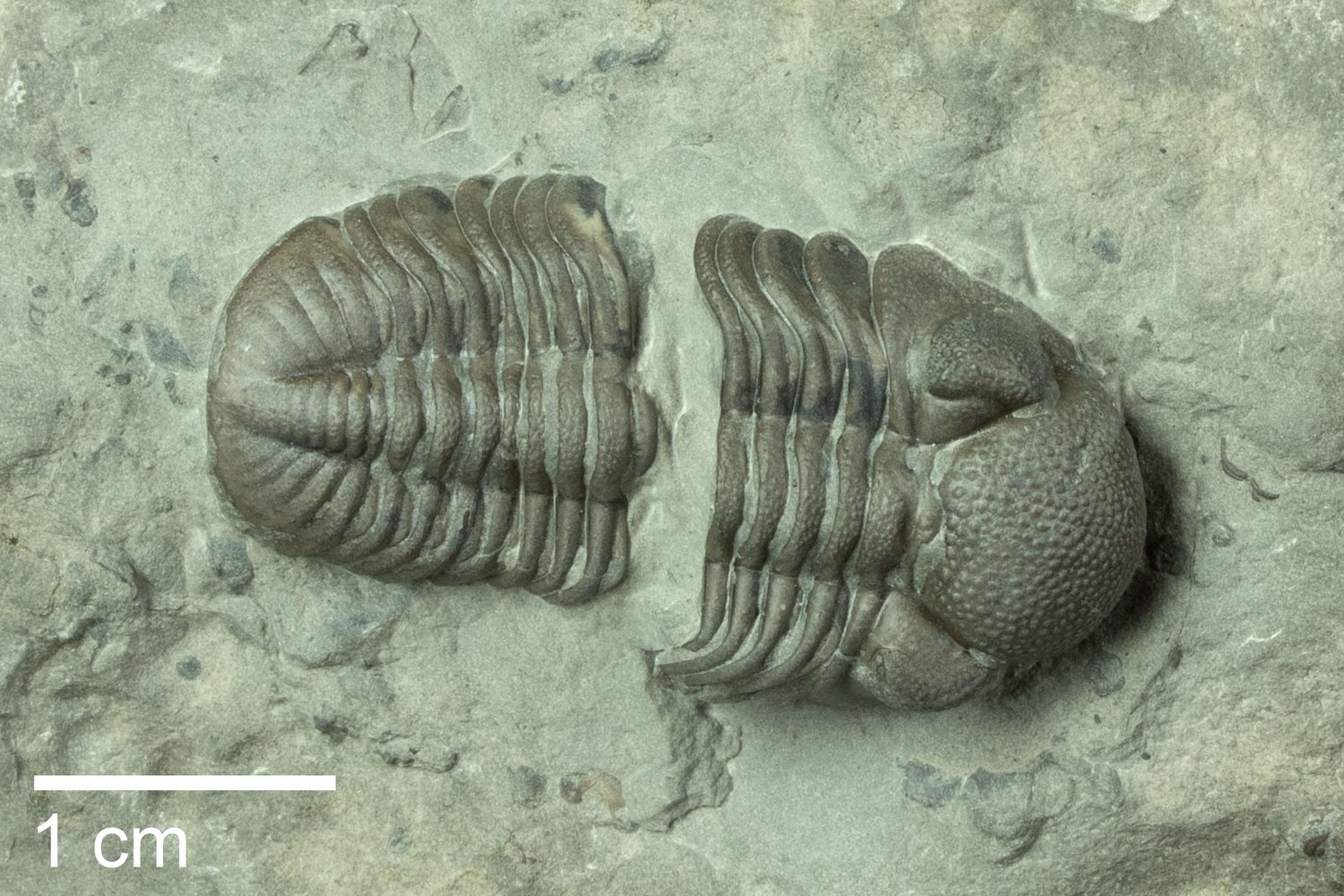
Fossil specimen of the trilobite Eldredgeops rana from the Middle Devonian Ludlowville Formation of Genesee County, New York (PRI 70712). This species of trilobite was geographically widespread in the Devonian, including in the state of Pennsylvania where it is the state fossil.
Learn about the Devonian trilobite Eldredgeops rana (formerly Phacops rana) from Central New York with Dr. Carlton Brett (University of Cincinnati).
3D Models of fossils from Pennsylvania
Fossil frond of the fern (pteridosperm; not assigned to order) Eremopteris zamioides from Pennsylvanian Llewellyn Formation of Sullivan County, Pennsylvania. Specimen is on display at the Museum of the Earth, Ithaca, New York. Length of specimen is approximately 11 cm. Model by Emily Hauf.
Fossil specimen of the trilobite Wanneria walcottana from the Cambrian Kinzers Formation of Lancaster County, Pennsylvania (PRI 76846). Specimen is from the research collections of the Paleontological Research Institution, Ithaca, New York. Trilobite is approximately 12.5 cm in length. Model by Emily Hauf.
Fossil specimen of a stem base of the horsetail (Equisetophytes) Calamites suckowi from the Pennsylvanian of Pennsylvania (PRI 50479). Note the characteristic nodes (horizontal lines) and internodal ribs (vertical lines). Specimen is on display at the Museum of the Earth, Ithaca, New York. Length of fossil is approximately 21.5 cm. Model by Emily Hauf.
Fossil specimen of the cone of the horsetail Palaeostachya from the Pennsylvanian of Columbia County, Pennsylvania. This is a cone produced by a large, extinct horsetail (Calamitaceae). Specimen is from the Cornell University Paleobotanical Collection (CUPC), Ithaca, New York (#1464). Length of specimen is approximately 15 cm. Model by Emily Hauf.
Pennsylvania State Rock: None
Pennsylvania does not yet have an official state rock.
Pennsylvania State Mineral: None
Pennsylvania does not yet have an official state mineral.
Pennsylvania State Gem: None
Pennsylvania does not yet have an official state gem.
Pennsylvania's Highest and Lowest Elevations
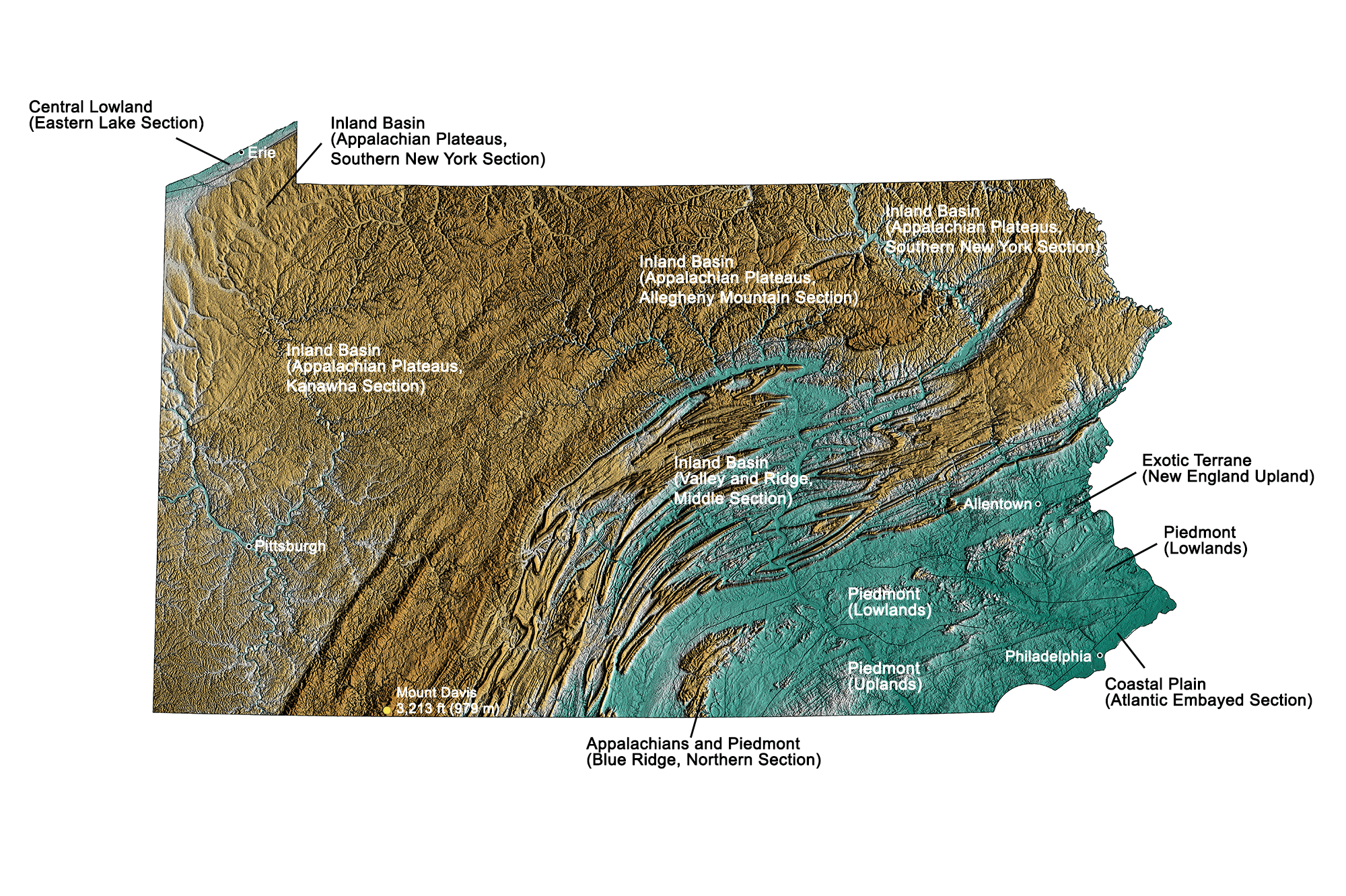
Topographic map of Pennsylvania with physiographic regions and point of highest elevation identified. Topographic data are derived from the Shuttle Radar Topography Mission (SRTM GL3) Global 90m (SRTM_GL3) (Farr, T. G., and M. Kobrick, 2000, Shuttle Radar Topography Mission produces a wealth of data. Eos Trans. AGU, 81:583-583). Image by Kiera D. Crowley for the Earth@Home project.
Highest Elevation: Mount Davis
At 979 meters (3,213 feet), Mount Davis, in Forbes State Forest, is the highest point in the state of Pennsylvania.
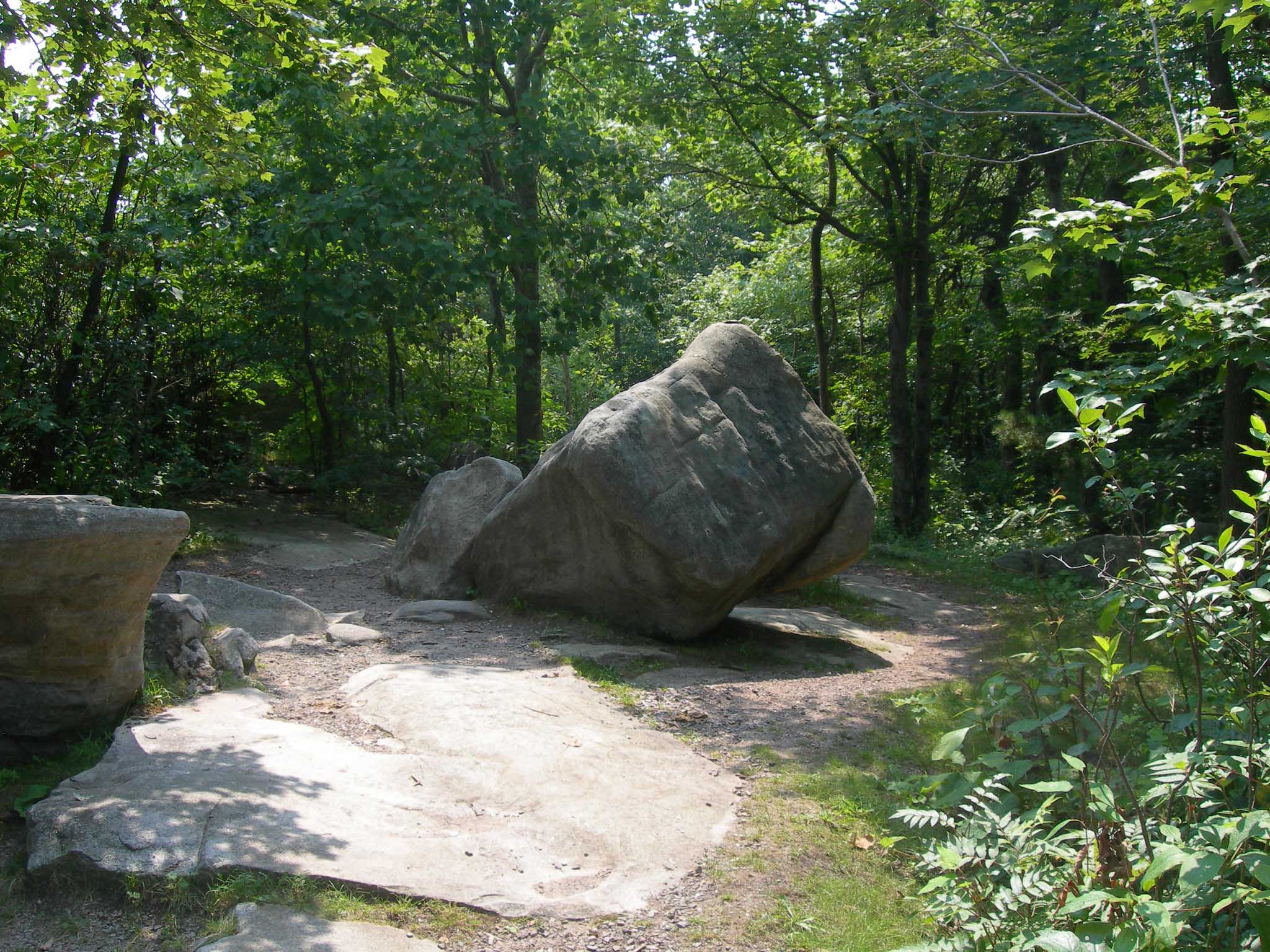
The boulder at the peak of Mount Davis, the highest point in the state of Pennsylvania. The USGS marker denoting its elevation is embedded in the top of the boulder. Photo by Jimmy Emerson (Flickr; Creative Commons Attribution-NonCommercial-NoDerivs 2.0 Generic license).
Lowest Elevation: Delaware River
Pennsylvania's lowest points are along the Delaware River, which exits into the Atlantic Ocean at sea level.

View from the Delaware River, looking towards Philadelphia. Photo by Peter Miller (Flickr; Creative Commons Attribution-NonCommercial-NoDerivs 2.0 Generic license).
Places to Visit
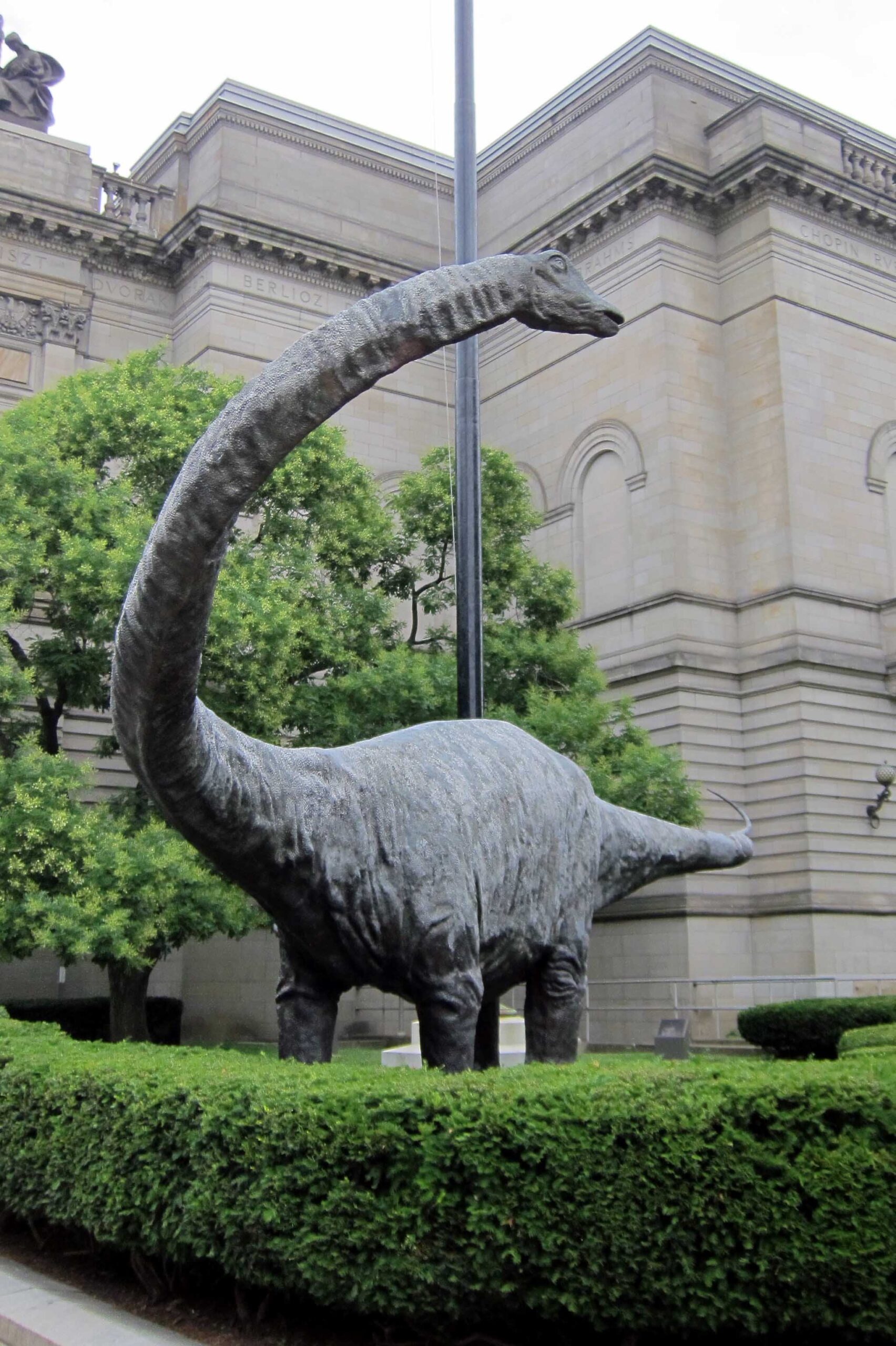
Statue of Dippy the Diplodocus dinosaur, standing guard outside the Carnegie Museum of Natural History in Pittsburgh, Pennsylvania. Photo by Wally Gobetz (Flickr; Creative Commons Attribution-NonCommercial-NoDerivs 2.0 Generic license).

Specimens on display in the entrance lobby of the Academy of Natural Sciences in Philadelphia. Photo by "daderot" (Wikimedia Commons; public domain).

Photo by Ken Lund (Flickr; Creative Commons Attribution-ShareAlike 2.0 Generic license; image brightened and resized).
Additional resources
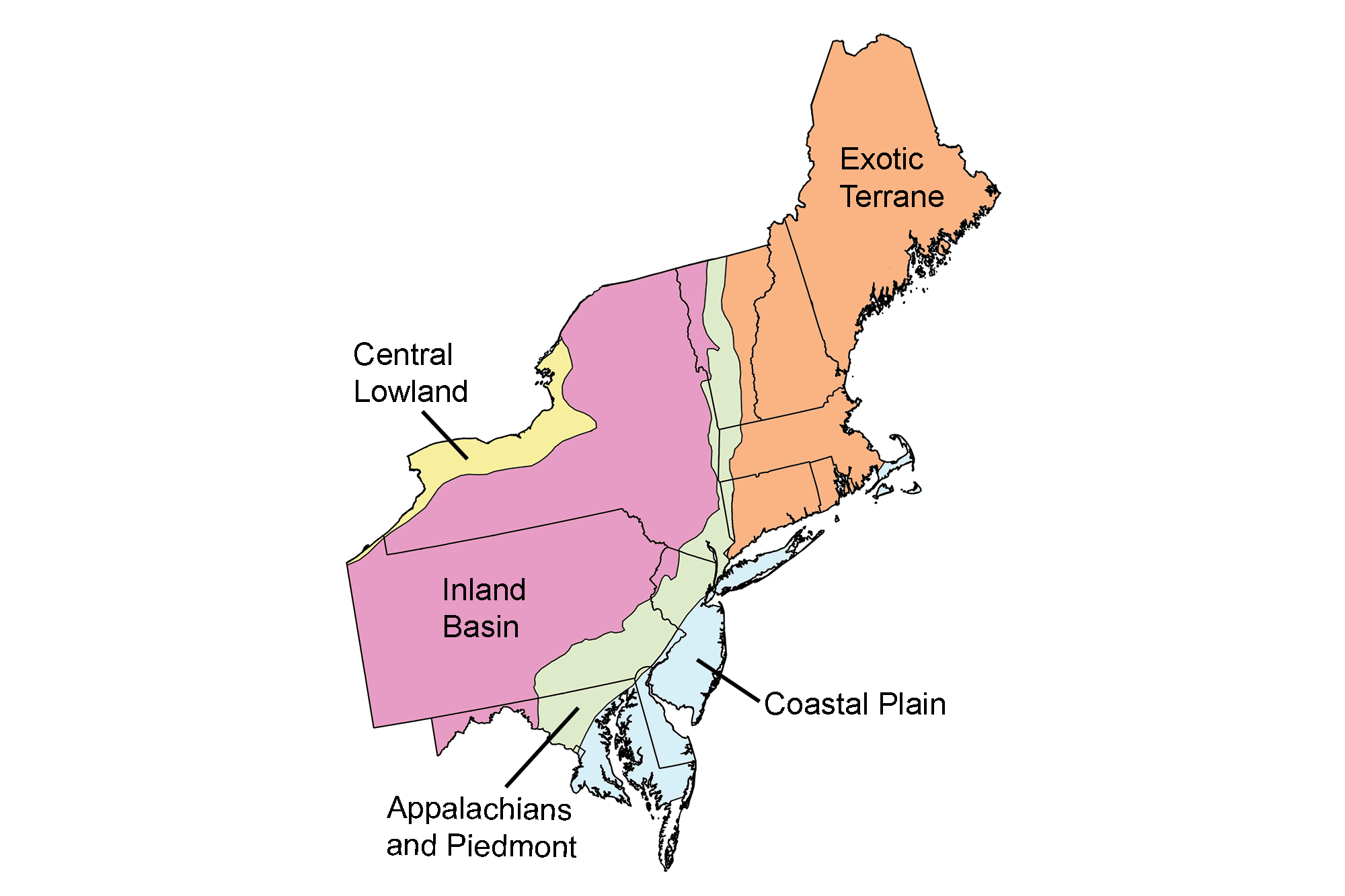
Earth@Home resources about Pennsylvania and nearby states:
- Rocks: Central Lowland, Inland Basin, Appalachians and Piedmont, Coastal Plain, and Exotic Terrane.
- Fossils: Central Lowland, Inland Basin, Appalachians and Piedmont, Coastal Plain, and Exotic Terrane.
- Topography: Central Lowland, Inland Basin, Appalachians and Piedmont, Coastal Plain, and Exotic Terrane.
- Mineral Resources: Central Lowland, Inland Basin, Appalachians and Piedmont, Coastal Plain, and Exotic Terrane.
Earth@Home resources about the northeastern region of the United States:



